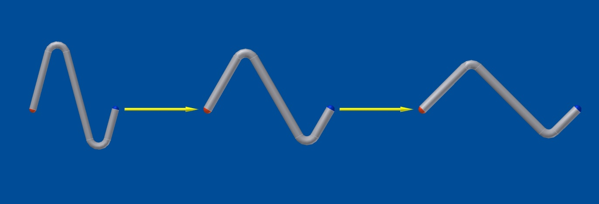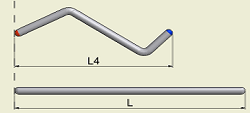- The paradox of gravity.
The paradox of gravity has been known since the times of Newton. From this it follows that the gravity of matter present in the Universe, whose space would be finished, should lead to make all stars, planets, and the interstellar matter start to move in the direction of their center of mass, which will finally result in a fusion of all the masses present in the Universe in one great mass of a spherical shape. If the space of the Universe is infinite, then the same process will lead to the creation of infinitely many spherical bodies of this type distributed evenly in this space. Nothing like this happens so there has to exist something that prevents from occurrence of such a phenomenon. This something is filling the Universe quantum gas, which resists the bodies moving in it. With interstellar and intergalactic distances, gravitational forces are so small that they are equalized by the resistance of quantum gas, which results that stars and galaxies remain in their places.
- The photometric paradox.
It follows from the application of the laws of photometry to the Universe that the static, infinite Universe uniformly filled with stars should lead to the uniformly bright background of the sky at night. Nothing like this happens so there has to exist something that prevents from occurrence of such a phenomenon. This something is energy quanta which fill the Universe. In the Universe, quanta are present in two forms: as light rays and as quantum gas.
Quantum gas is a result of a disordered, chaotic motion of the energy quanta at a velocity of 299792458 m/s.
A light ray is a result of an ordered, linear motion of the energy quanta at a velocity of 299792458 m/s.
Energy quanta, as magnetic dipoles, attract one another, arrange one after another like a string of beads. Electrons of atoms emit photons in a completely random way, but they leave the body in good order, one after another. Energy quanta perform an ordered, linear, progressive motion, creating a ray only when there exists a source of the quanta. A ray exists only when it extends. In order to extend, it must be connected to the source of quanta. Constantly emitted quanta form the building blocks for a still growing, extending ray. The ordered, rectilinear arrangement of the energy quanta in a ray makes the quanta move in a particular direction. A light ray is the only way the quanta can be transported over long distances. A single light ray is a linear stream of “connected” pole-to-pole magnetic dipoles (energy quanta, photons), in which every dipole retains its individuality, its power, the frequency of its vibrations, its “color”. A single ray of white light is like a train consisting of engines only, which is moving in space thanks to new and new engines attached to it at the station. From a human point of view, this is a strange way of “travel”, but it is effective and it results from the nature of the world of quanta.
A light ray always moves in quantum gas. This gas fills the Universe; its temperature is 2.725 K. The fact that the Universe has a temperature is an experimentum crucis, indisputable evidence for the existence of quantum gas.
Close to the light source (such as stars), quanta have a specific power, specific stress, they vibrate with a specific frequency. The further from a star, photons moving in quantum gas are “relaxing” slowly, losing their power, the frequency of their vibrations is decreasing.

This phenomenon applies to the entire spectrum of quanta the rays are made of. In the range of visible light, this means “disappearance of quanta on the short side of the spectrum” (ultraviolet, violet) and “appearance of quanta on the long side of the spectrum” (far red). The result is a phenomenon called redshift. The weakening of starlight does not end at “redshift”. The light of more distant stars reaches us as the infrared. The light of the furthest stars does not reach us at all since the stress of its quanta diminished so much that it aligned with the stress of quanta of the cosmic environment. As a result of this, after some time the quanta of the environment “tear” the ray to single quanta, mix with them thoroughly, and reduce their stress (the frequency of vibrations) to their own level. It can be said that the ray is homogenized. This means that the Space has a visibility limit, some kind of a horizon. Therefore, although the number of stars in the infinite Universe is infinite, the number of stars seen from any point of the Universe is finite. And so in this way, the photometric paradox ceases to be a paradox.
- Heat death of the Universe.
This is a hypothetical final state which would be reached by the evolving Universe as a result of irreversible processes. In this state the entropy of the Universe would reach the maximum value, temperatures would equalize, no processes would occur in nature, stillness and inaction would follow.
Now the Universe works as follows. One form of matter (atomic matter) generates from another form of matter (dark energy) a third form of matter (energy quanta). Particles of dark energy set energy quanta in motion. Energy quanta are a necessary precondition for the existence of atoms (bodies). They prevent atoms from bonding into a single body. Having fulfilled their role, quanta are released (emitted) to the environment. The quanta gather in space as quantum gas. Since energy quanta are gas, space currently has a temperature of 2.725 K.
The most recent research shows that the Universe consists of three kinds of matter:
– atomic matter (4.9%),
– dark matter, which is an equivalent to energy quanta (26.8%),
– dark energy (68.3%).
The above means that until the present time 4.9% of atomic matter made (burnt) 26.8% of dark energy into quanta. This means that the Universe still has in its “tank” 68.3% of “fuel”, dark energy (100 % – 4.9 % – 26.8 % = 68.3 %).
What is, then, the future of the Universe? To be sure where the Universe goes, the physical quantities should be observed:
– speed of light, which is now 299792458 m/s,
– temperature of the Universe, which is now 2.725 K.
A precondition for the stability of the Universe is the stability of the both quantities mentioned above. Their constancy will be evidence that quanta produced by electrons of atoms from dark energy no longer gather in the depths of space, but by the lines of fields they return to the world of dark energy (see figure below).

However, if in the future measurements demonstrate that the temperature of the Universe has increased, and the speed of light has decreased, it will be a signal that the number of quanta is increasing and, at the same time, dark energy is diminishing, the energy of which the quanta are produced and which maintains the velocity of these quanta at the same level. This will mean that the Universe in its present form is coming to its inevitable end.
As it is apparent from the above, all cosmological paradoxes result only from the lack of knowledge about the fact that apart from the world of atoms there are also two lower levels of the organization of matter, that is the world of energy quanta and the world of dark energy.

